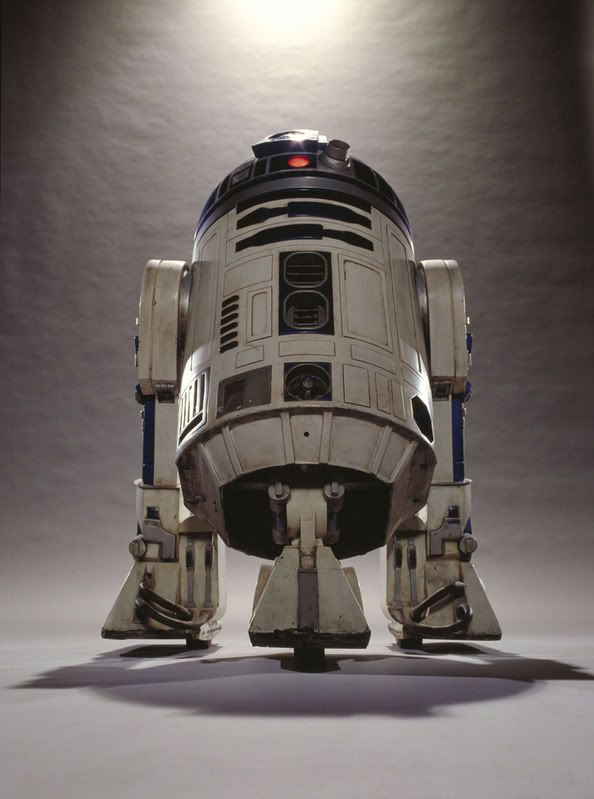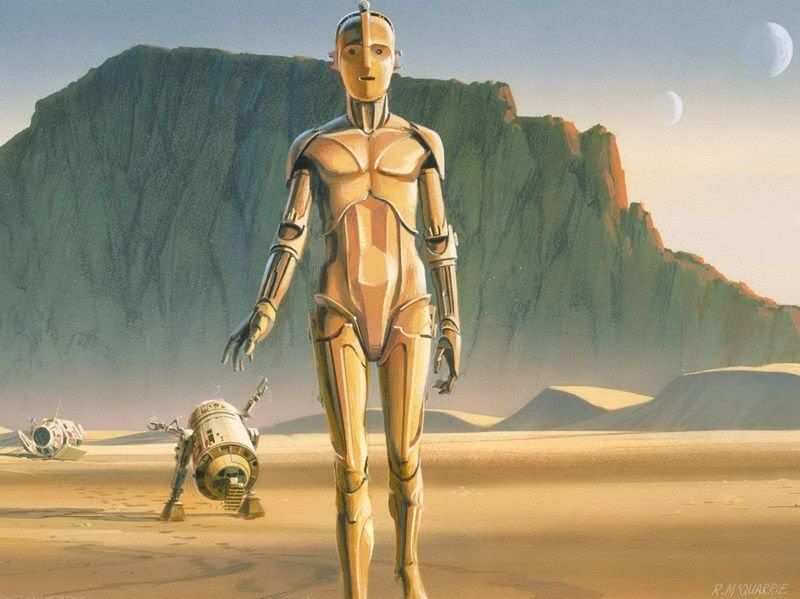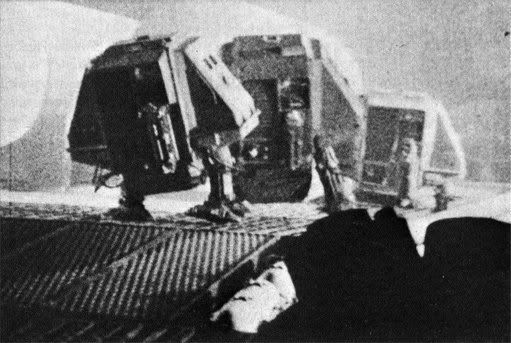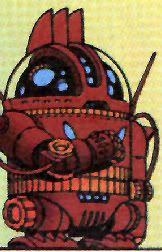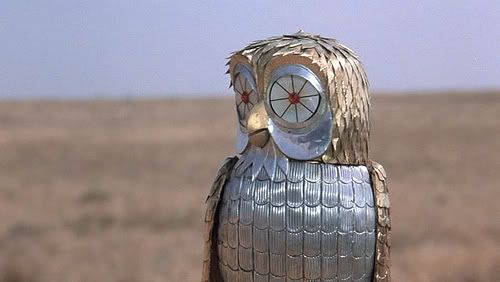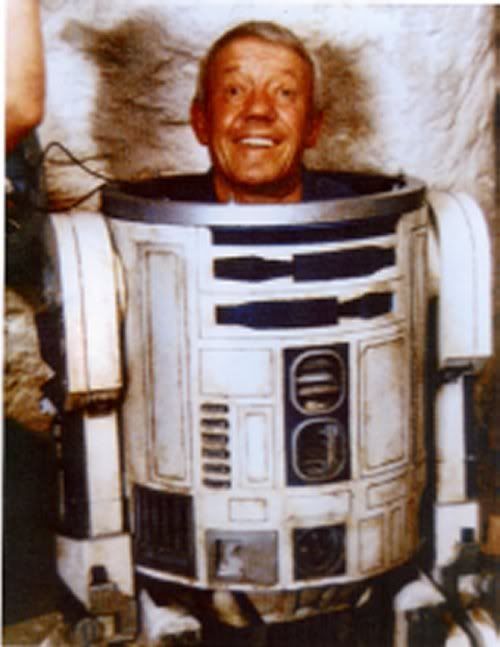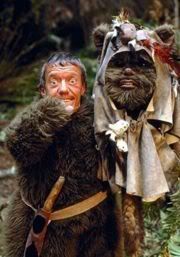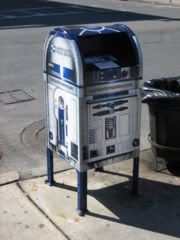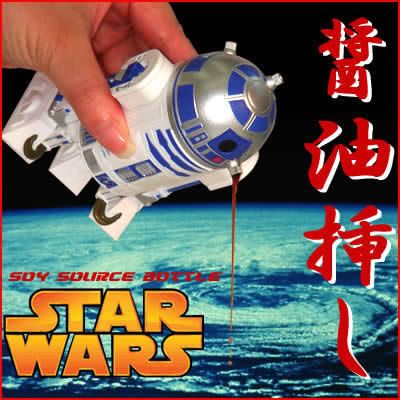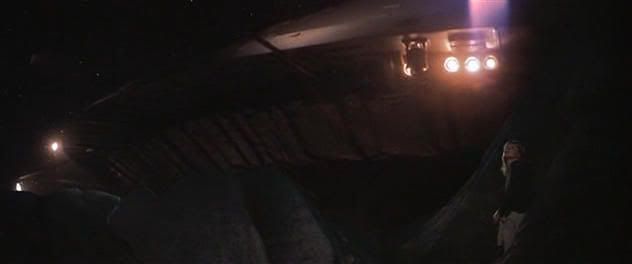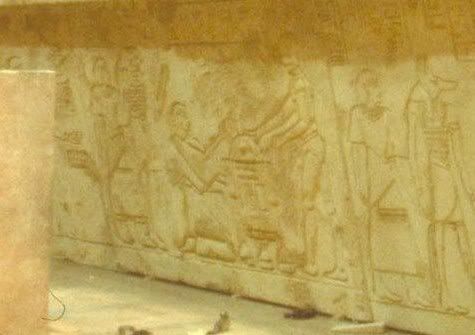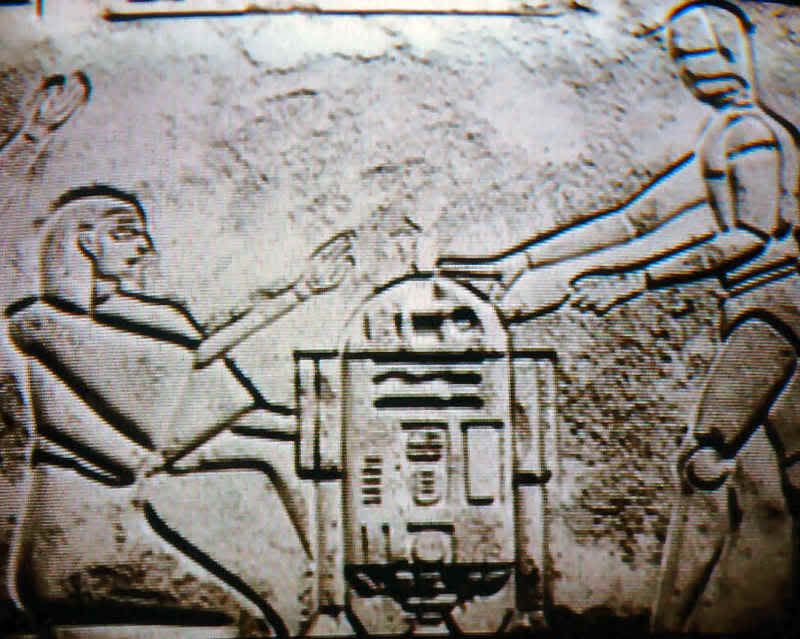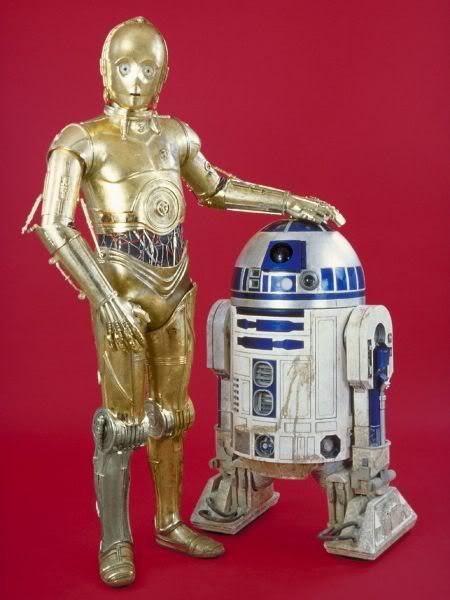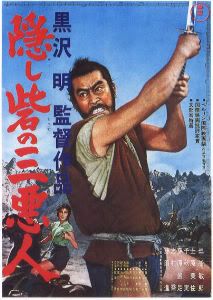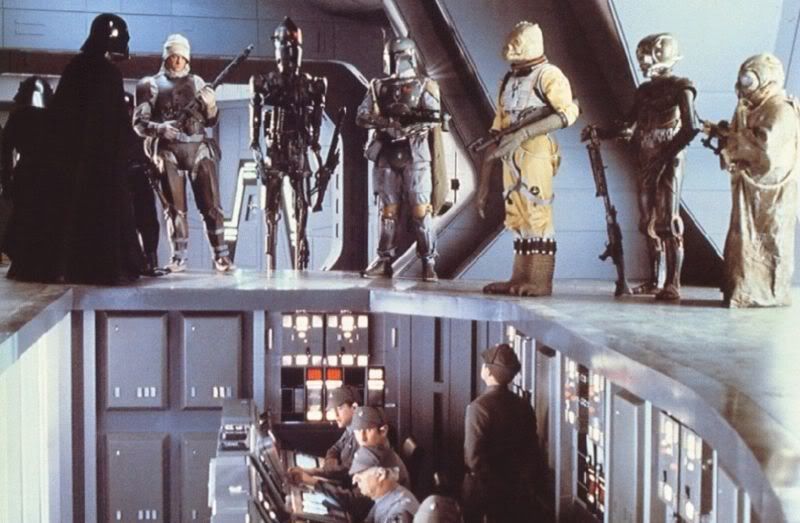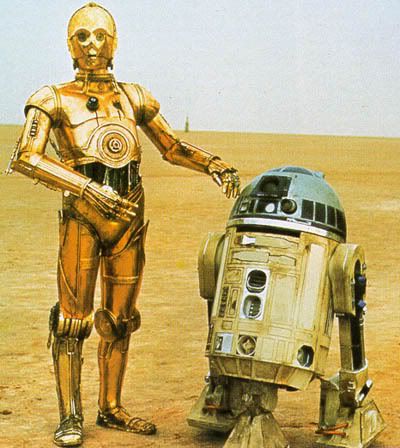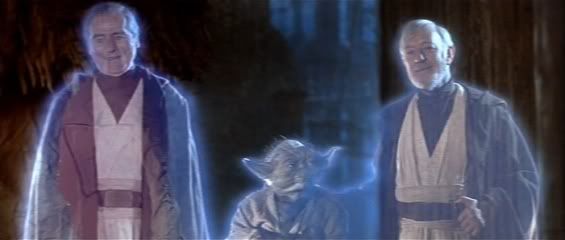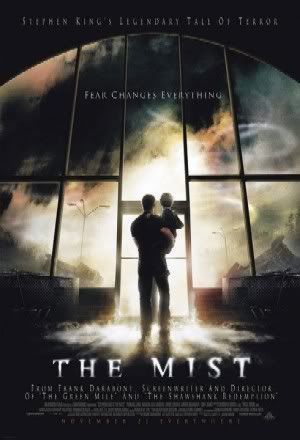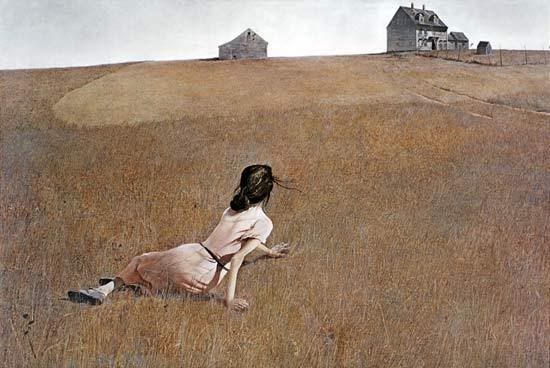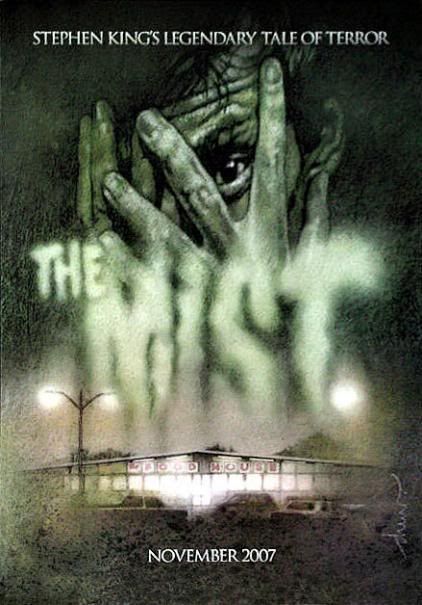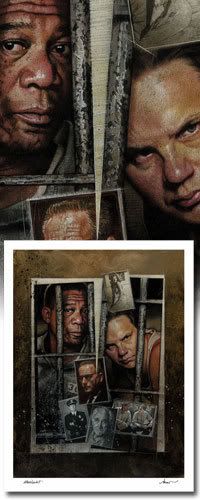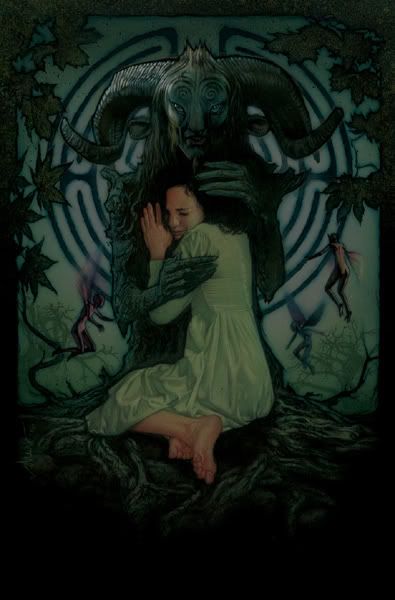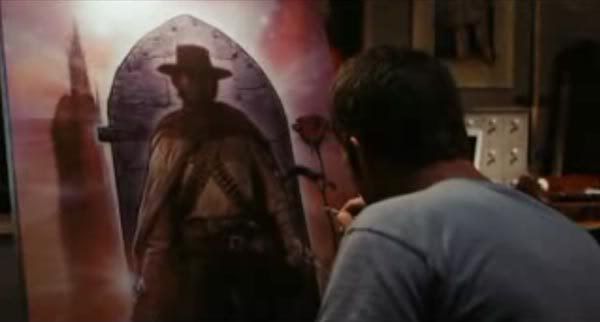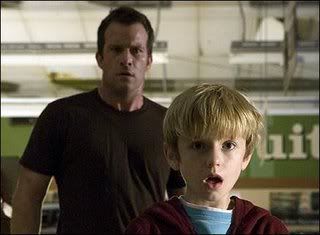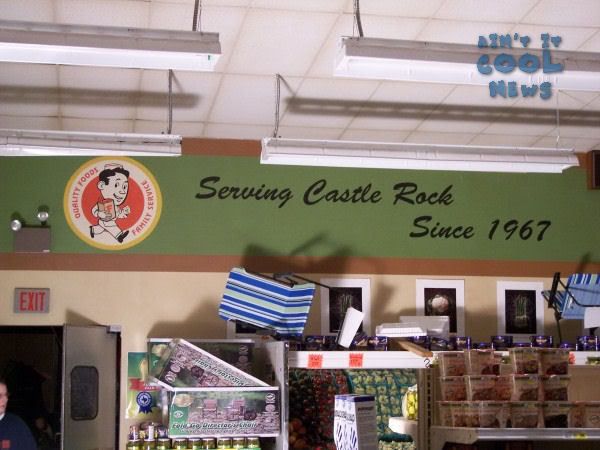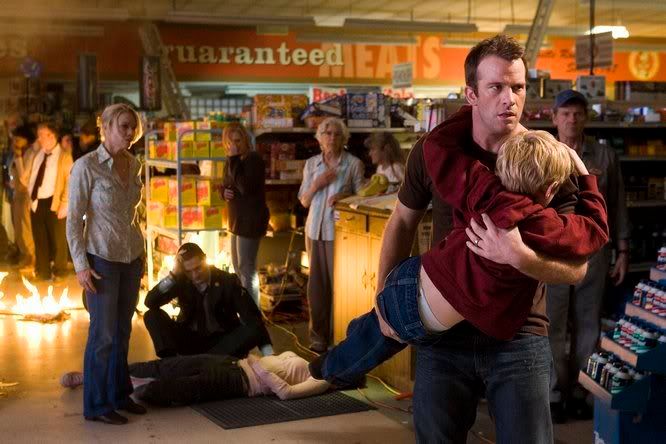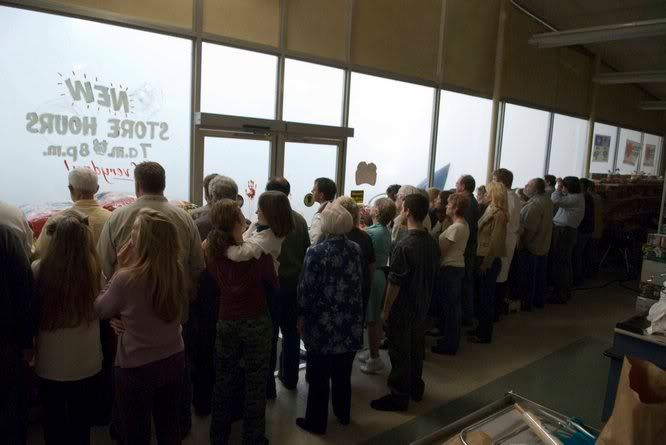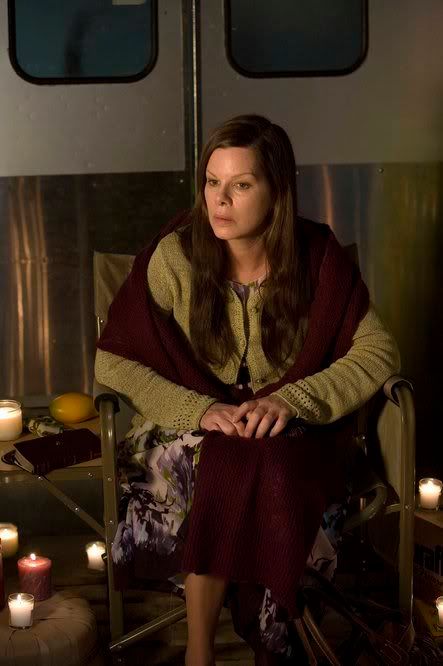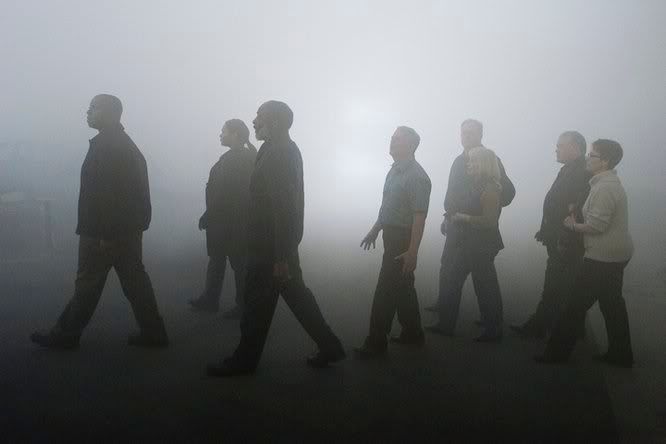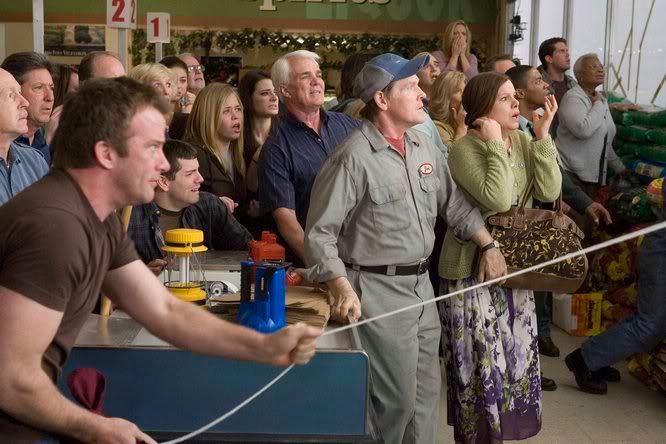I ended part one with Sophie Hatter, the Witch of the Waste and Heen the dog fleeing the King's soldiers on a dragonfly-like flying machine, guided back to Howl's Castle by a beam emitting magic ring connected to Calcifer the fire demon. Unfortunately Howl failed to teach Sophie how to land. The Castle's mouth-like facade opens to admit her and she crashes inside. Remembering the essentially feminine symbolism of a House/Castle, it is easy to see the sexual symbolism inherent here, interestingly with female Sophie penetrating the male Howl (via his Castle).
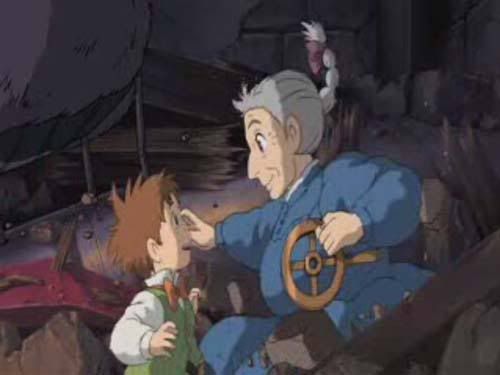
Markl rushes to greet her. We can note here how despite the hard landing Sophie has managed to keep the Wheel (of Fate) firmly in hand. Only one of the three handles of the Wheel remains attached, perhaps conferring that Sophie has now completed two parts of a three step initiation cycle.
That night everyone in the Castle sleeps when Howl returns home, still in partial bird-form, bleeding and now also ethereal, partially transparent, as if he is fading away. Calcifer warns that this time Howl has gone too far. Howl walks through like a ghost, silent, trailing bloody footprints and feathers. Sophie, young because she's sleeping, wakes up and sees the blood and feathers. She gets up to check on Howl, remaining youthful, illuminating a candle to light her way.

Note the placement of this essential enlightenment symbol beside a book marked with a basic Tetramorph pattern, the Cosmic Cube. Note too the Grail form of her candlestick holder. Sophie makes her way upstairs and enters Howl's room, but finds it has become a tunnel, rather subterranean, lined with Howl's collection, with an overwhelming amount of toys and other childhood objects.
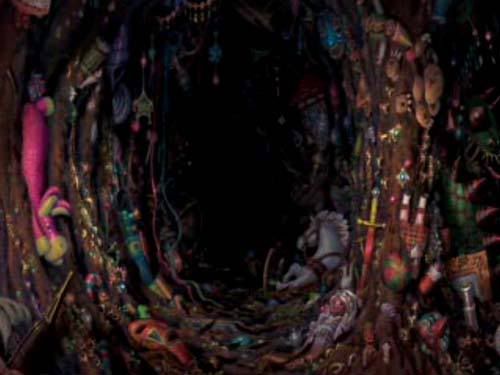
We could probably play "Where's Waldo" with this scene there is so much to look at, but I wanted to point out the close combination of Templar symbolizing White Horse, Sword and right beside it a Solar Cross in red and green. This literally on top of a kilt wearing doll with its head buried in the ground, which one could read as Templarism going underground in Scotland. Perhaps then the telescope and corner of the gilded picture frame suggest examining the arts for what has been hidden.

And here we have Sophie again in close proximity to the Wheel. At foot level to her right are twin columns topped with a green pyramid made from children's blocks. Recall the twin-pillar arch in the Ernst piece at the start of part one of this article, and seen several times as a background decoration during the magic acts of "The Prestige", and the Green Pyramid topped Wayne Tower in "Batman Begins". Deep in the cave Sophie finds Howl, huge and barely human. In fact he is particularly Bat-Faced.
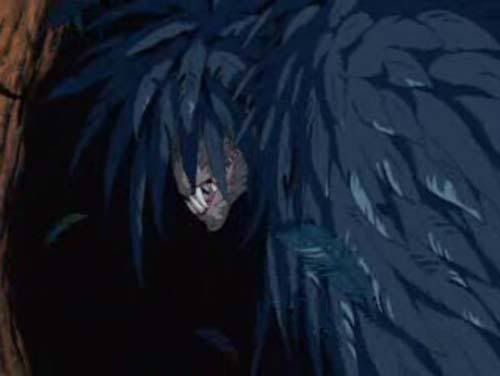
When Howl is in pain his voice sounds exactly like Bale's Batman voice (differentiated from his Bruce Wayne voice). He tells Sophie to go away but she refuses. She insists she's going to break the spell on Howl, but he reminds her she can't even break the spell on herself before he flies away deeper into the tunnels. As this happens Sophie becomes old again.
Sophie then wakes up. This was just a dream, though we must remember that Dreamtime is the Other World, Howl's Castle is the Other World, and the story itself takes place in an Other World, making this a dream, within a dream, within a dream. Clearly the tunnels lined with childhood things is a visualization of the subconscious, and this made explicit here further identifies Howl's item packed room seen in part one as the same. The Castle is the body of Howl, and the room where he dreams is that body's mind.
And what is Calcifer in this equation? Having learned from Suliman that Howl's heart was stolen by a demon, Sophie tries to pry details from Calcifer regarding his contract with Howl, but Calcifer refuses. That morning Markl, Turnip Head and Heen help Sophie extract the flying machine from the Castle.
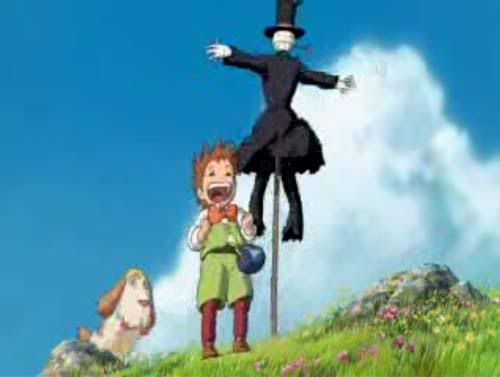
I include the above image merely because it's charming. They all then gather for breakfast. Calcifer is suspicious of the new guests, especially the Witch of the Waste. Though now seemingly completely senile she still displays a fascination with the fire demon.
Howl runs down in good spirits, and while he comments on the Witch and Suliman's dog being at his house he does not seem overly concerned. He meets Turnip Head for the first time, recognizing the nasty spell on him, commenting that everyone in their "family" has problems. Howl announces they have a lot of work to do as they must move the Castle to elude Suliman. He tells Turnip Head that the spell on him is too powerful and he'll have to stay behind. Outside the castle Howl lays out chalk lines into a magic circle.

Note the pyramidal, eye-like sign he makes. Calcifer moves the Castle onto the magic mark. Inside Howl draws a second, smaller circle.
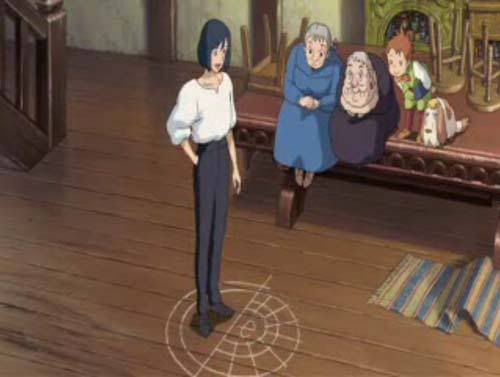
It's nice to see an example of Chalk Magic so close to having written my article
Night Divides The Day about the film "Day Watch" and its Chalk of Fate. Howl gathers Calcifer up in a fireplace shovel and the fire demon releases his magic, taking on a more dynamic form as he does so.
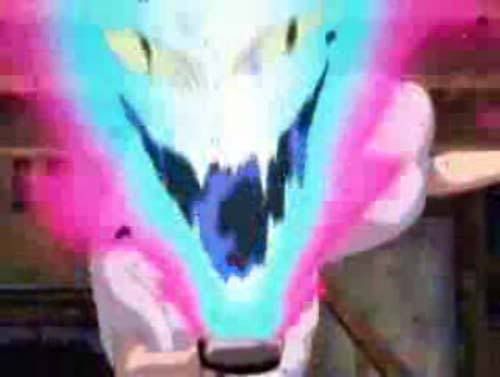
Immediately the Castle starts to change form around them. Repairs are made, new rooms grow, and fine furnishings drop into place. The main room of the Castle is now finely decorated including Rose patterned wall paper.
While moving the Castle is a matter of protection, the alterations Howl makes are purely for Sophie's benefit. This includes a doorway opening to her hometown Market Chipping, and the recreation of her room at the hat shop. As Sophie looks about the room she de-ages momentarily. Sophie does not understand this gesture, stating it is the perfect room for a "cleaning woman", despite the gifts Howl has placed for her in the room. Now that the Castle no longer opens to Porthaven or Kingsbury there are new locations to replace them on the Wheel. We can note that the Market Chipping door is denoted as Gold.
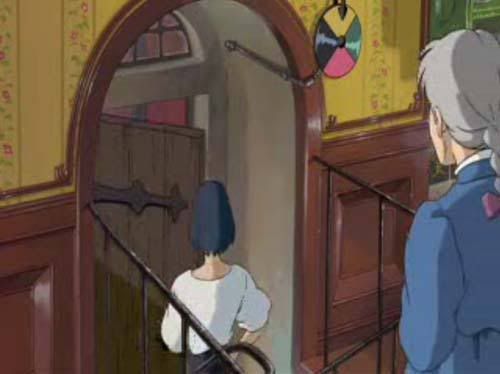
The Red Door however leads to someplace even more important, the heart of this film, and Howl states it is a present for Sophie. The Red, which is really more of a Rose, now opens to Howl's Secret Garden.
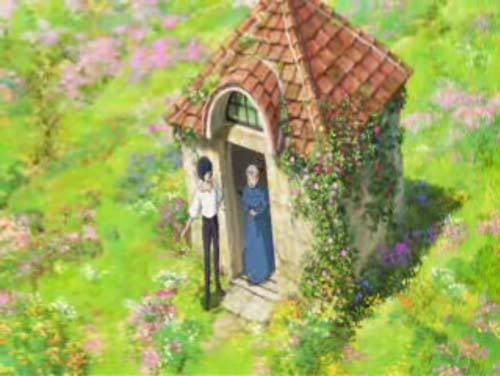
That's how he describes it. We can recall that Sophie's story begins with her in a false garden. This is the real deal. Sophie reverts nearly to her full youth in this place, idyll and ideal, she describes it as perfect, like a Dream, and familiar though she'd never been there before, instantly like home. Howl then leads her to a small Mill house.
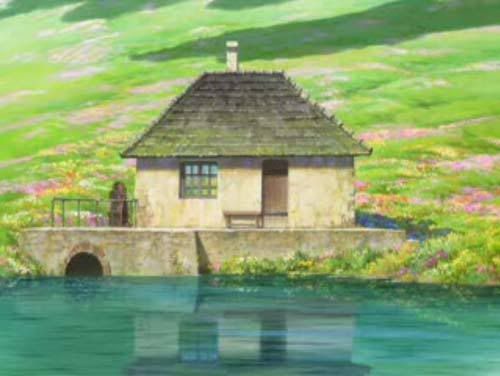
He describes it as his secret place to be alone as a child. I find it quite interesting how, on the color Wheel of Howl's door, Gold now leads to the location of Sophie's childhood, an exoteric reality so much so that she grew up and lived in a shop, partly open to the public. The Rose leads to the esoteric reality of Howl's childhood, a Secret Garden, a meditative place for him alone. The Mill is a major symbol, not just of Time but of the process and quality of Time. A Mill set in an Eden is clearly indicative of the Golden Age. And while this may not seem at all to be an Oz related scene, it actually is in a couple of different ways. Approaching the idealized Emerald City, Dorothy and Company are waylaid in the Poppy fields (emblematic of Isis/Demeter/Ceres). Sophie describes Howl's Secret Garden as a Dream, which is the state the poppies send Dorothy, the Lion and Toto into (the Scarecrow and the Tin Man are immune to intoxication).
Maybe more interesting then this is the inherent relationship between the symbols of the Mill and the Tornado. In
"Hamlet's Mill" authors Giorgio de Santillana and Hertha von Dechend identify the Shakespearian figure with the Icelandic hero Amlodhi, about whom they state:
"Amlodhi was identified, in the crude and vivid imagery of the Norse, by the ownership of a fabled mill which, in his own time, ground out peace and plenty. Later, in decaying times, it ground out salt; and now finally, having landed at the bottom of the sea, it is grinding rock and sand, creating a vast whirlpool, the Maelstrom (i.e., the grinding stream, from the verb mala, "to grind"), which is supposed to be a way to the land of the dead. This imagery stands, as the evidence develops, for an astronomical process, the secular shifting of the sun through the signs of the zodiac which determines world-ages, each numbering thousands of years. Each age brings a World Era, a Twilight of the Gods. Great structures collapse; pillars topple which supported the great fabric; floods and cataclysms herald the shaping of a new world".
Amlodhi/Hamlet then is one and the same as Saturn/Chronus, the lord of the Golden Age. The Mill, the Axis Mundi, collapses creating in its place the Maelstrom. The Maelstrom is inherently related to the whirlwind, apparent through the association of the whirlwind to the counter clockwise spiral, a symbol of Poseidon. As stated before, this makes the Tornado that carries Dorothy to Oz a symbol of Age Shift, as is nearly if not always the case with magical portals in fantasy fiction. The country of Oz is itself Tetramorphic in nature.

We find the essential image of Oz as the indication Wheel for the magic door. Like the Emerald City, the magic door functions in such a way as to make Howl's Castle the Center. It is even conceivable that the shift in the color wheel, the removal of Blue for Yellow, is a subtle in-joke related to the geographical confusion between Munchkin Land and Winkie Land , whether or not the East and West of Oz are congruent or opposite those of the real world, which is truly an interesting detail in what is essentially a solar allegory.
Sophie is enchanted but she still senses something is wrong, and intuits that Howl is providing for her and their friends, because he will soon be leaving and very well won't be coming back. She expresses her strongest desire as wanting to rescue Howl from the curse turning him into a monster, even though she is not pretty and only good for cleaning. Howl tells Sophie that she is beautiful, but she obviously does not believe this as when he says it she instantly becomes old again. Their conversation is interrupted by the sound of a passing aircraft.
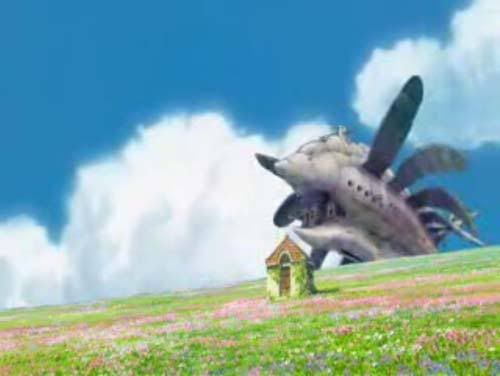
Two children are threatened by a nightingale. It is a flying battleship. Howl is surprised and disgusted to find them flying even in an area as remote as this, and for certain, though not stated, because they are invading the sanctuary of his Secret Garden as he's presenting it to Sophie as a safe haven. Sophie asks if the ship is from their kingdom or the enemy's, but it makes no difference to Howl. We can also take interest in the close proximity here of a Mill and a Zeppelin like air craft. Howl can't abide letting them pass with their payload of bombs, so he casts a spell causing engine malfunction. The ship starts to list in the sky and we hear alarms sounding.
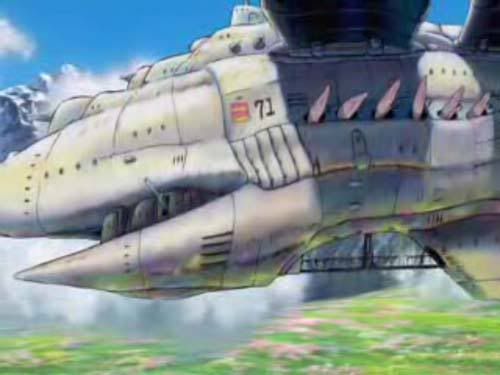
The pink and gold flag confirms it as a craft from their Kingdom, Ingary. Note the 71 or 17 reversed. One of the indicators of the occult significance of 17 comes from the Tarot, where it is the number of the Star Trump. If you're not already familiar with the story of "Howl's Moving Castle" my emphasis of this will become clear as this article progresses. Suffice it to say that in this context 71 is the anti-Star.
Casting the spell causes Howl's left arm to break out in claws and feathers. He assures Sophie that he is just messing with them and the ship won't crash. An ovapositor-like aperture on the ship spits out several of the Boschian flying tadpole-men, Sulimen's agents. Howl urges Sophie to run, sprouts wings and then lifts her by the arms, flying towards the exit to the Castle with Sulimen's henchmen in close pursuit. He tosses her and his magic carries her through the door and back into the Castle, the entrance shifting back to Gold behind her.
That evening Sophie tucks the Witch of the Waste into bed. The Witch, who seems to have regained some of her faculties, can tell that Sophie is in love, an observation that delivers a measure of youth to Sophie. Their conversation is interrupted by the sound of air raid sirens. Suliman's tadpole men scour Market Chipping looking for the Castle's entrance. Elsewhere huge bird-like warplanes engage in a bombing blitz. Howl soars above the battlefield. Note the high visual comparability of the following shot to one from "Batman Begins".
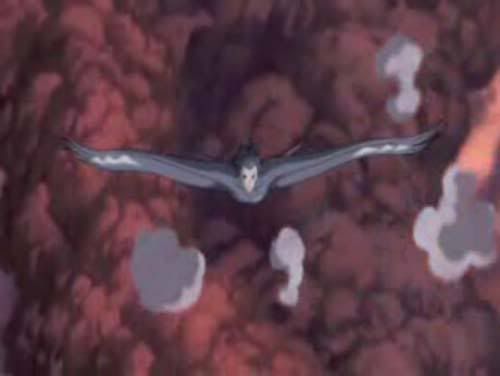
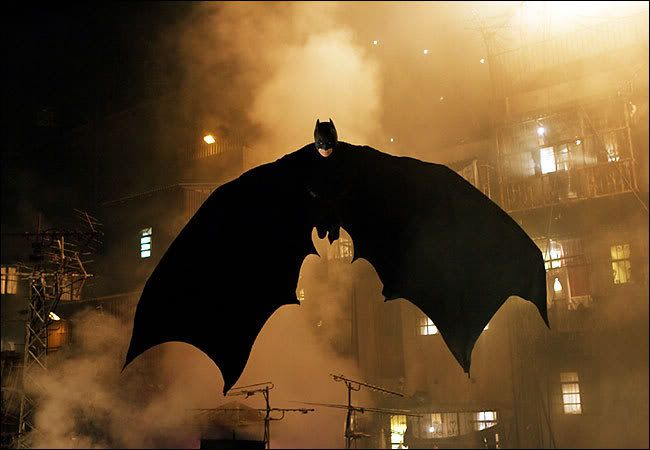
I believe this would be striking even if both characters weren't performed by Christian Bale and the two films released less then a week apart. The next morning Markl and Heen step out of the hat shop door in Market Chipping in disguise and carrying roses. I believe he and Sophie may be setting out to sell flowers from the Garden as Howl suggested, and my sister tells me this is an allusion to Markl romancing a younger sister of Sophie's in the novel, but this is never made clear. As far as I'm concerned Roses speak for themselves.
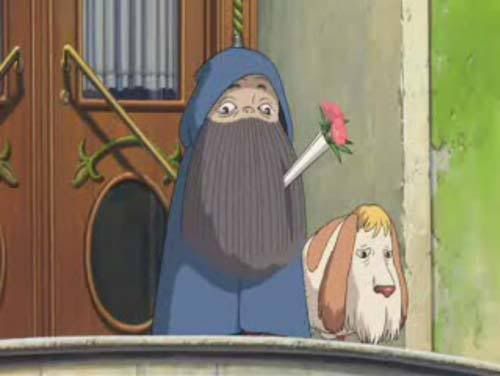
Markl is startled by the arrival of an unfamiliar woman and rushes to get Sophie. It is Sophie's mother. They have a tearful reunion. Sophie's mother demonstrates her ditziness, taking brief but fleeting interest in the sleeping Witch and how different the interior of the shop is (as it is now actually the inside of the Castle). Even Sophie's elderly state barely seems to phase her. It is apparent that the physical status of daughter being older then the mother is a reflection of these characters' natures and relationship.
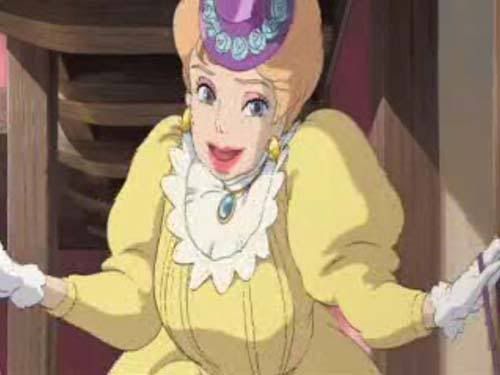
Recalling that the last time we saw her Sophie's mother was wearing a hat indicating the story of the Swan Knight, we can take great interest here in her row of Blue Roses. It may seem I have a bee in my bonnet regarding this character's head gear. Maybe so. Her name, by the way, is Honey Hatter.
Honey informs Sophie that she has remarried, and that her new husband is wealthy so they can all live together and Sophie will no longer have to work as a cleaning lady. Sophie replies that she likes living where she is. Honey easily accepts this and rushes out again as she has a car waiting. After she and Sophie have left the room the Witch of the Waste rises from her fake slumber and dashes over to pick up a purse Honey has left behind. She opens the bag and extracts a long, black worm.
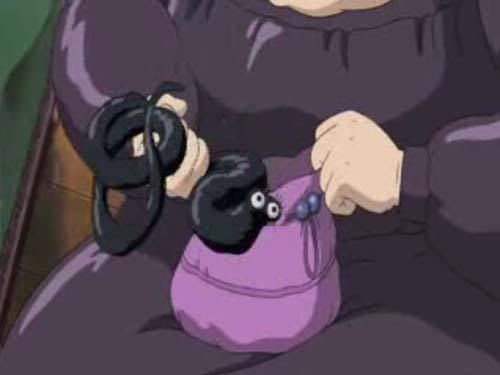
She calls it a Spy Bug (though it could be called a
Stygian Leech) and comments on this as a poor try on the part of Suliman. I can't help but be reminded of the Spy Flys from "The Golden Compass". The Witch tosses the Spy Bug to Calcifer to consume. He destroys it, but it makes him very sick. Outside we see that the driver of the car Honey rides in is one of Suliman's pages. She angrily reports that she's done as she was told and asks to be returned to her husband, then quietly hopes Sophie will forgive her betrayal. In front of the shop Sophie and Markl watch a stream of people evacuating the town. Markl, having heard Honey ask Sophie to move in with her, asks Sophie if she's going to leave too, but Sophie assures him that she's staying, that they're a family now, and the two embrace like mother and child.
Back inside Sophie tries to revive Calcifer with bellows, but he remains feeble, little more then embers. The Spy Bug has made him sick in a serious way. The Witch of the Waste puffs away at a cigar she found in the purse. We can honestly ask what it is that she's smoking considering Heen's reaction.
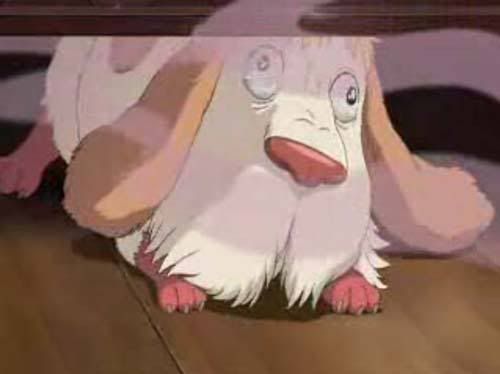
Markl reads in the newspaper that their kingdom is winning the war, but the Witch states that only fools believe what they read in the paper. The smoke is irritating everyone so Sophie asks Markl to open a window. The Witch advises against this as Suliman's agents are searching for them and Calcifer is in no state to protect the Castle. Then the bombs start to fall on Market Chipping.
Sophie runs out to check on the hat shop, but is chased back inside by Suliman's blob-men. As the bombs drop Howl flies over the town trying to do what little he can, personally steering one away from the shop. He then escorts Sophie (youthful save for her hair) back inside the Castle.

Inside Howl breaths life back into Calcifer, but the fire demon is still weak and far from peak ability. The Witch states she and Howl need to have a talk and he agrees, but doesn't have time at the moment, then leaves to continue protecting Sophie's shop from the bombardment.

Blob-men continue to try to force their way in, so Sophie uses the magic door to move the Castle to the Wastes, from where she can still witness the attack on Market Chipping. She sees Howl battling fiercely in a completely bestial form. Turnip Head is nearby, waiting for Sophie. Sophie realizes that the only way to save Howl from the war and himself is to move the Castle so that he no longer feels like he must protect the shop. To do this she takes the radical step of removing Calcifer from the Castle. Once he passes the threshold the Castle collapses. It is raining and Calcifer is close to being doused, but Turnip Head leads the company back into the shelter of the Castle's remains.
Sophie now wants to rescue Howl and convinces Calcifer to try to physically move the Castle into town to do so. But Calcifer is a demon and demands a bargain, suggesting Sophie give him her eyes. Instead she cuts off her long braid and feeds it to him. This is enough to motivate a small portion of the wreckage, which starts to amble towards Market Chipping. Calcifer states he could have done much more with Sophie's Heart. The Witch of the Waste suddenly comprehends the bargain between Howl and Calcifer. Howl is heartless because he has given his to Calcifer as part of their contract. The Heart of Howl is of course what the Witch desires more then anything, and now that she sees her prize close at hand she greedily grabs onto Calcifer. But this causes him to lose control of the Castle and as Calcifer is living fire the Witch starts to burn. Still she will not let go. In a clear evocation of Oz, Sophie throws a bucket of water on the witch to put the flames out, and this reduces Calcifer to a feeble ember.

Note too that the addition of the white apron to Sophie's blue dress is highly reminiscent of Disney's Alice, which becomes more noteworthy momentarily. The Castle collapses, splitting into two pieces, and Sophie and Heen fall into a ravine, separated from the rest of their company.
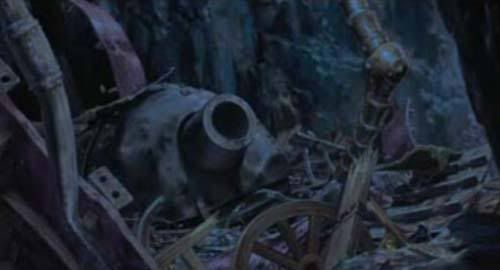
Note the intact Wheel placed behind a broken Beam. Speaking of Beams, Sophie realizes she may have just killed both Calcifer and Howl, but a faint beam of Blue light from her Ring shows they still live.
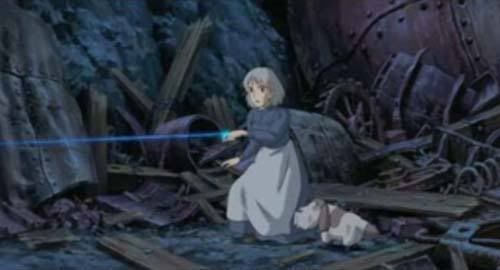
She follows the Beam to the Castle's still intact Magic Door, the Black Door, leading apparently to full Darkness.

Sophie, followed by Heen, bravely enters. Taking a light to darkness, is the Illumination of Mystery.
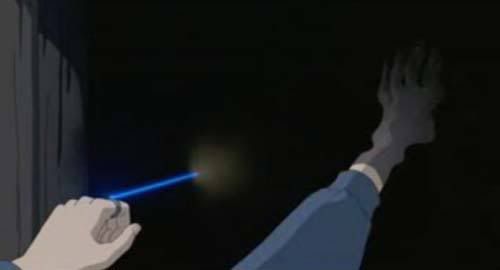
And we can clearly see that this Magic Portal, this Waycross, is a Water Door. They emerge in Howl's Secret Garden. Overhead Falling Stars streak across the sky.

They extinguish, dying as they hit the ground. Sophie sees a young Howl observing this as well and realizes the portal has led her to Howl's past.
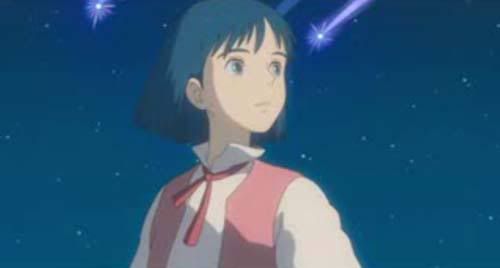
Sophie's ring seems to react with the death of each Fallen Star. She watches as the child Howl catches one of the Stars before it hits the ground.
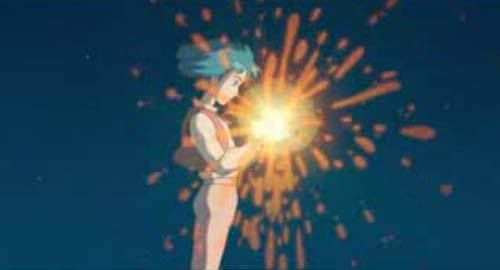
And then he swallows it.
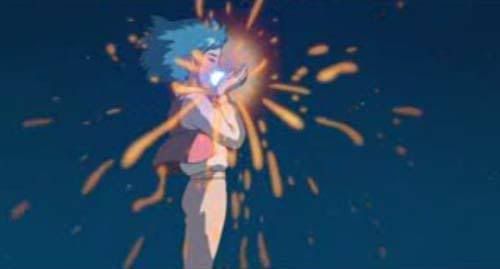
Calcifer emerges from Howl's chest, where his Heart was. This is the bargain made between Howl and the fire demon, in fact a Fallen Star (compare the conjuncture of Fallen Star and Hearts/Love in Neil Gaiman's "Stardust"). To save the Star, Howl gives him his Heart. This is what makes Howl the Heartless Man, and we might note that this too is why Howl is really a child in a man's body. Howl's emotional development ceased when he bargained his Heart away. Suddenly Sophie's Ring breaks and the magic that led her to this place goes with it. The ground beneath her opens like a well and she falls away, but as she does she calls out to Howl that she'll save him one day in the future. Howl hears her and looks her way as she falls. We can assume that this foreknowledge is what led Howl to Sophie to begin with, their meeting in Market Chipping no mere coincidence. Sophie is literally the girl Howl waited his whole life for.
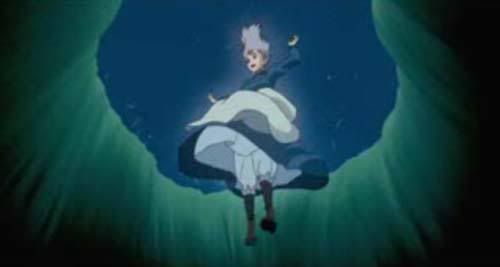
This image of Sophie's drop clearly indicates Alice's fall down the rabbit hole.
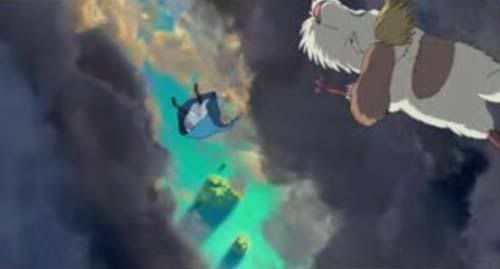
Sophie and Heen fall through the Earth and into the Sky. Difficult to see in the still above are the Two Pillar-like natural projections beneath them.
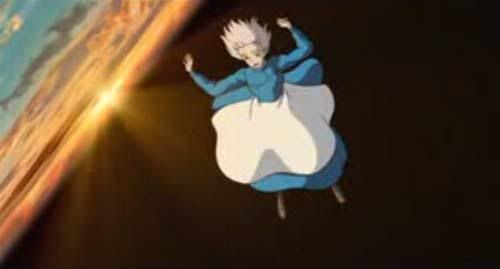
Reminding us that this is essentially solar allegory, we watch Sophie fall past a horizon line, and enters a dark, near-featureless limbo. Heen fulfills the Dog's essential purpose in journeys to Otherworlds and guides Sophie back to the Castle's door.
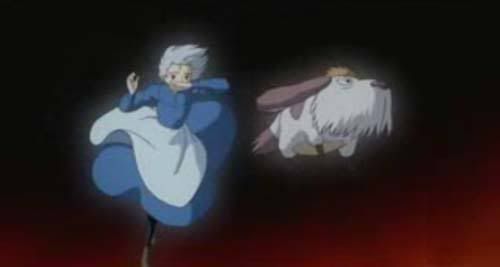
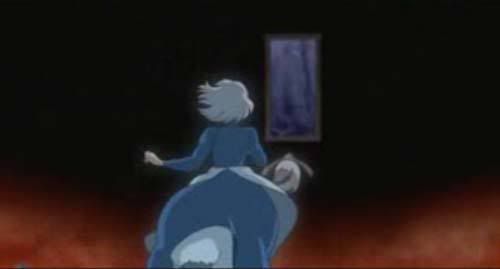
They emerge to find Howl waiting for them. The over-extension of his magic has left him barely human, a monstrous heap of feathers.
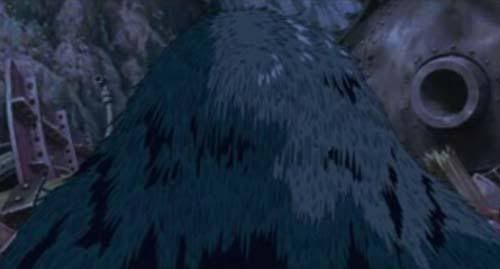
When she speaks to him his humanity somewhat emerges, but still he is hardly human, and isn't even properly a bird.
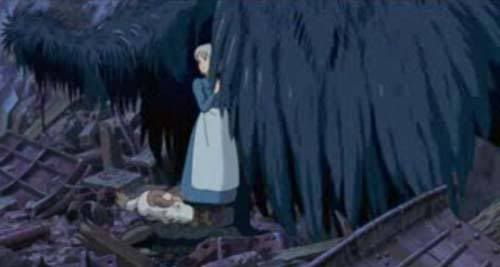

Howl flies Sophie and Heen to Howl and the rest of their friends, left teetering on a platform on a cliff's edge.

It is hard not to read this image of the Witch and Markl cowering beneath the cruciform of Turnip Head as religious in nature.

At this point Howl has just a single, monstrous bird-leg, and it's possible to read this supporting of a Blue Bird form as the Axis Mundi that supports the vault of the heavens, very similar to the symbolism of the Umbrella. Exhausted, Howl collapses, the feathers blow away in the wind leaving his human form lying prone on the platform near death.
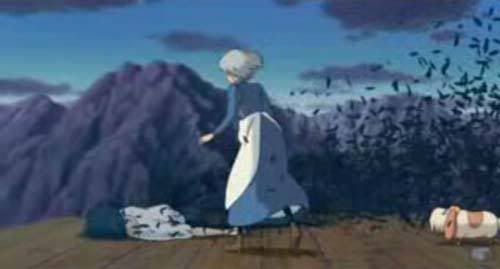
To live Howl needs his Heart back, and Sophie pleads with the Witch of the Waste to return it. The Witch overcomes her greed and hands Calcifer to Sophie.
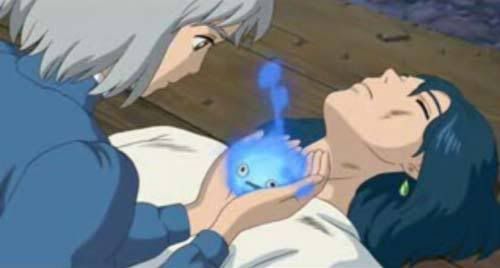
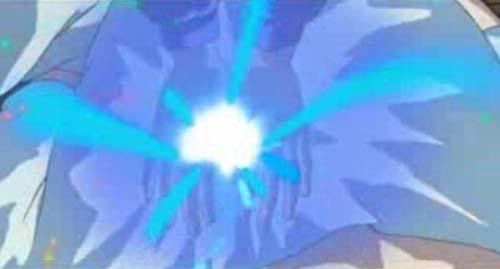
Returning Howl's Heart sets Calcifer free, and he flies away in his original Shooting Star form, exalting in his freedom. But when he leaves the magic animating the platform goes with him. The legs collapse and the platform slides down a steep hill towards the precipice. Turnip Head jumps in front to halt their momentum.
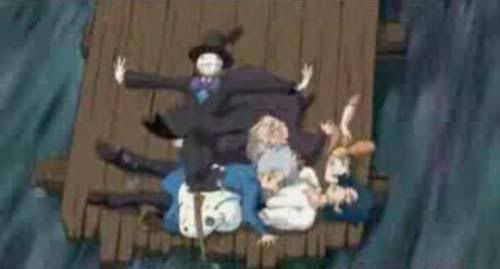
He stops them just in time, but his support post was ground away in the process. In thanks for saving all of their lives Sophie kisses Turnip Head.
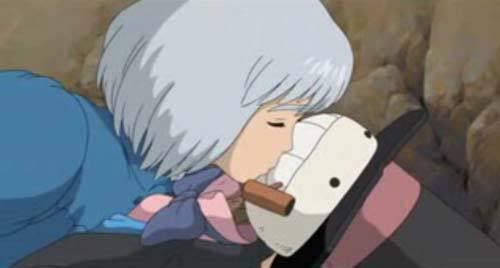
And as should be expected it is a kiss that was needed to break Turnip Head's curse. He instantly transforms to his normal form.

He is in fact a Prince, the missing Prince from the neighboring kingdom whose disappearance set off the war. Interesting to note that at the end of "The Wonderful Wizard of Oz" it is the Scarecrow who becomes the ruler of Oz. Now that he's back to his normal self he can return to his home kingdom and have his father stop the senseless war. Howl now revives (resurrects) from his deathlike state. Suliman watches this all through her Looking Glass. Heen looks back at her and laughs at her expense. She calls the dog a traitor. Calcifer flies back as he quickly realized he missed his family.

The story ends with the family living happily in a new and improved Castle.
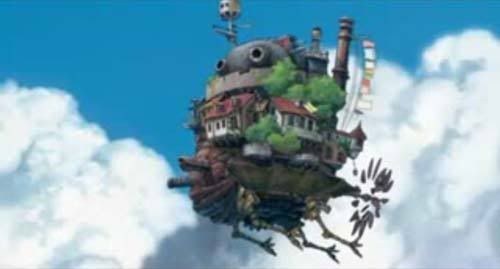
Having overcome all their trials, their initiations, the characters transcend to an elevated state. The Castle itself becomes the Bird. This is an interesting point as it closes several circles, and I think this might even be Miyazaki's commentary on synchronicity. Diana Wynne Jones did write a second book set in the Kingdom of Ingary, called "Castle In The Air", but it is not in actuality a sequel to "Howl's Moving Castle". Not only is Miyazaki making reference to this, but to his own work as well, "Laputa: Castle In The Sky" is the first film released by Studio Ghibli ("Nausicaa" not being an official Ghibli production), the inception of a priceless tradition of exceptional dream realizations.
